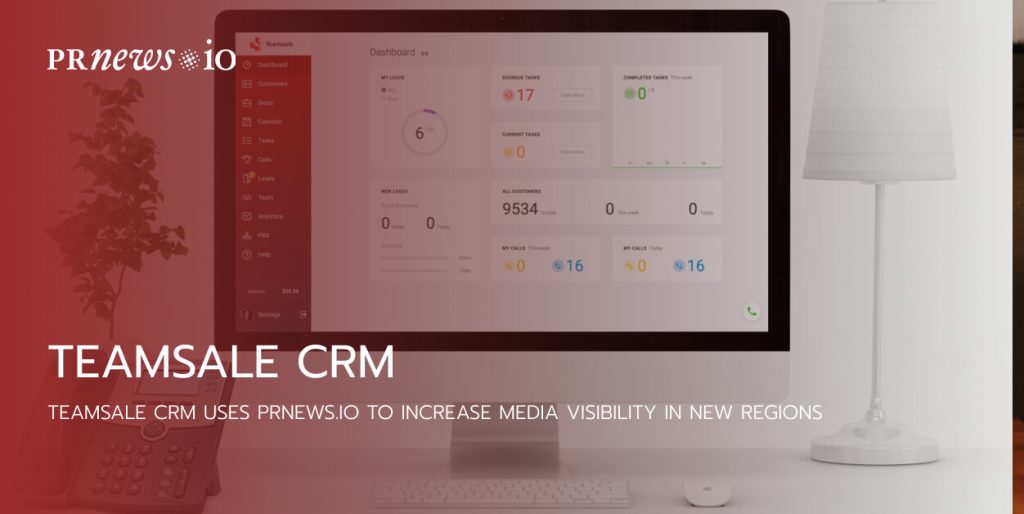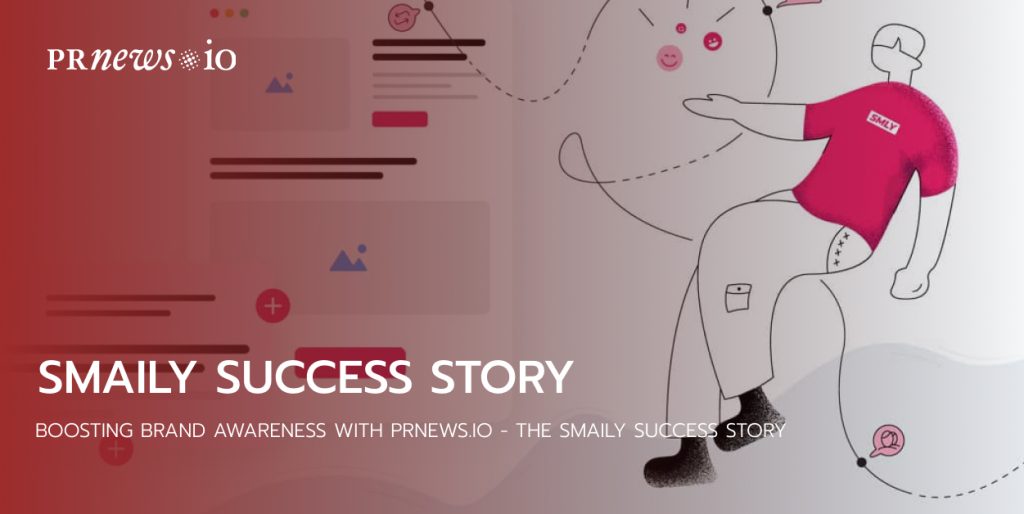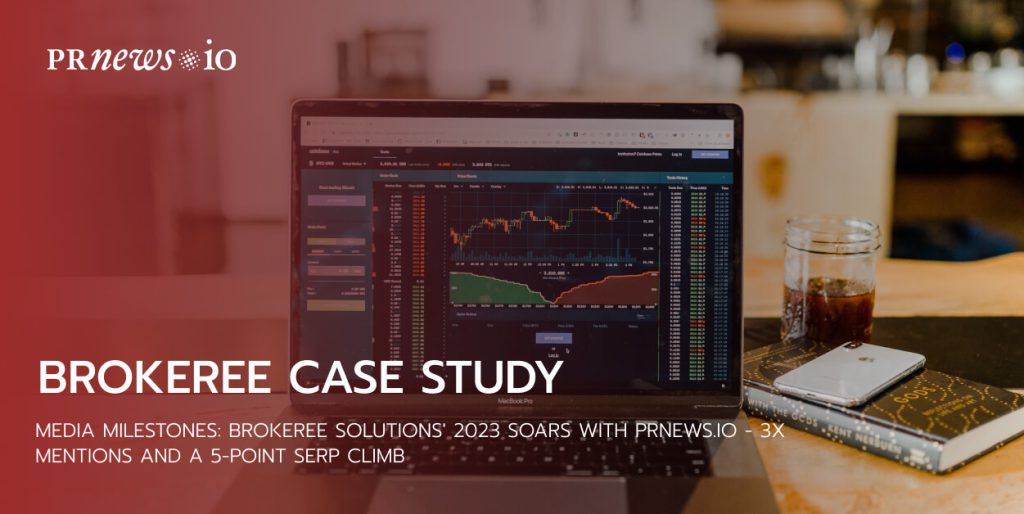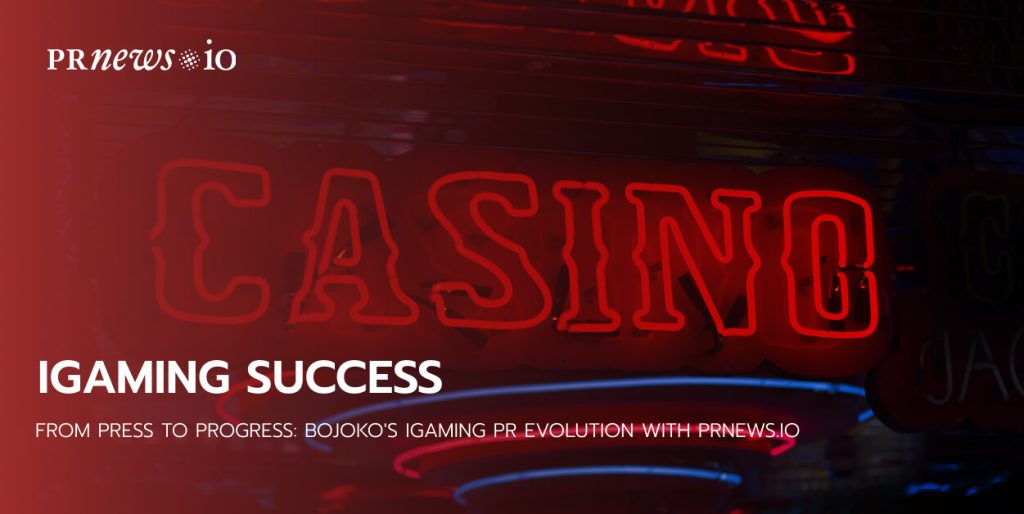Your marketing strategy won’t yield amazing results unless you, as a content marketer, can clearly visualize your plan. Therefore, it’s crucial to utilize a framework that offers deeper insights into various marketing journey stages and client types. In the realm of content marketing, the “funnel” is pivotal. Understanding how users behave as they progress towards their ultimate objectives is essential for guiding them to choose your product or service.
To achieve this, you must navigate through the TOFU, MOFU, and BOFU stages. In this article, I’ll demystify these components of the content marketing funnel for you. Let’s get started.
Marketing Funnel Definition
In the realm of content marketing, there’s a framework that reigns supreme – the Content Marketing Funnel. This ingenious concept breaks down the customer journey into three distinctive stages: TOFU (Top of the Funnel), MOFU (Middle of the Funnel), and BOFU (Bottom of the Funnel).
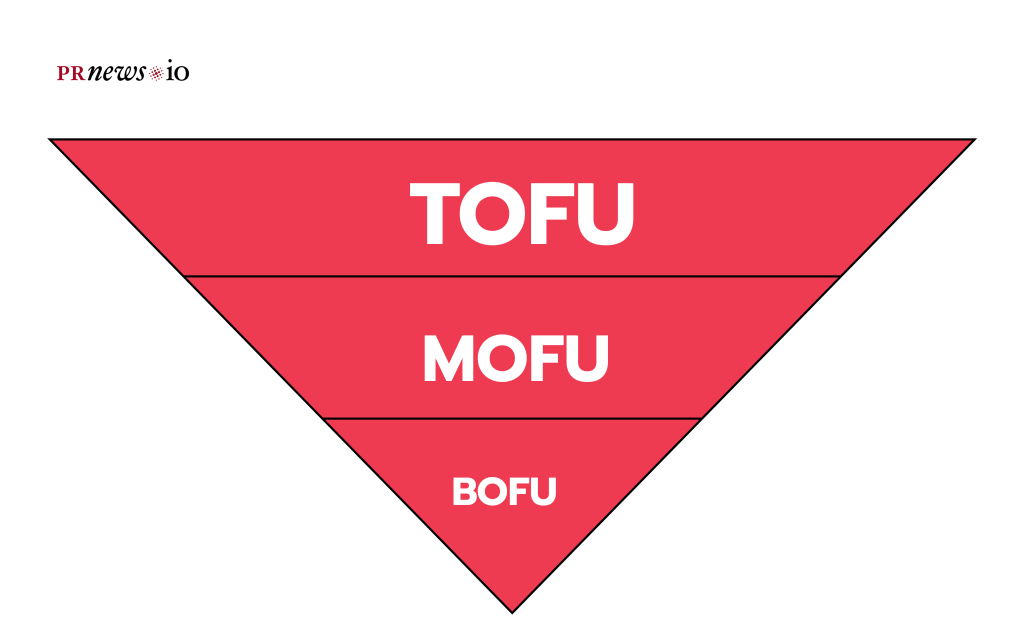
So, what exactly is the marketing funnel in content marketing? In a nutshell, the marketing funnel is a structure that marketers employ to transform people unfamiliar with a brand into loyal customers. It serves as a visual representation of the entire client journey, from their initial encounter with the business to the final purchase.
The marketing funnel concept is based on the premise that a brand attracts a larger number of people than those genuinely interested, capable of becoming leads, and eventually, customers.
Within this funnel, content marketers cast a wide net to capture as many leads as possible and then guide them through each stage of their decision-making journey. This process encompasses several key stages, taking visitors from the point of first awareness about the company and its products, continuing to earn their trust, and fostering customer loyalty even after a sale is made.
The goals of sales and content marketing are intertwined within this funnel. It’s essential to view the funnel as a means to not only create brand awareness but also, through a series of processes, to convert customers into loyal, paying clients. The objective isn’t just to capture attention but also to:
- Establish a relationship
- Foster user engagement
- Build trust
- Cultivate credibility, and
- Encourage repeat business.
This holistic process encompasses the accomplishment of the TOFU, MOFU, and BOFU content marketing stages.
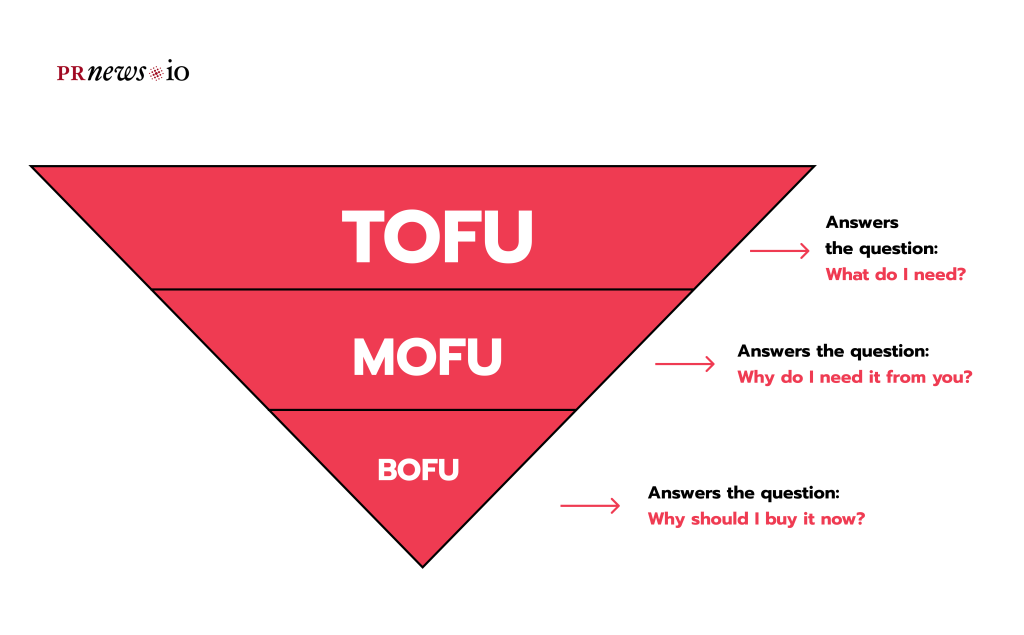
TOFU, MOFU, BOFU Content Marketing Stages
As you’ve already understood, these terms mean the stages of the content funnel.
TOFU (stands for Top Of the FUnnel), MOFU (stands for Middle Of the FUnnel), and BOFU (stands for Bottom Of the FUnnel) based on each other to increase leads in order to ultimately lead to conversion.
This funnel provides a basic framework for any company to start off of, but the details will differ greatly based on your clients. Your TOFU, MOFU, and BOFU phases should fit your every buyer persona, which means your very first step should be to fully understand who your buyer is and what inconveniences you can solve. Only then you can create your content for these stages appropriately.
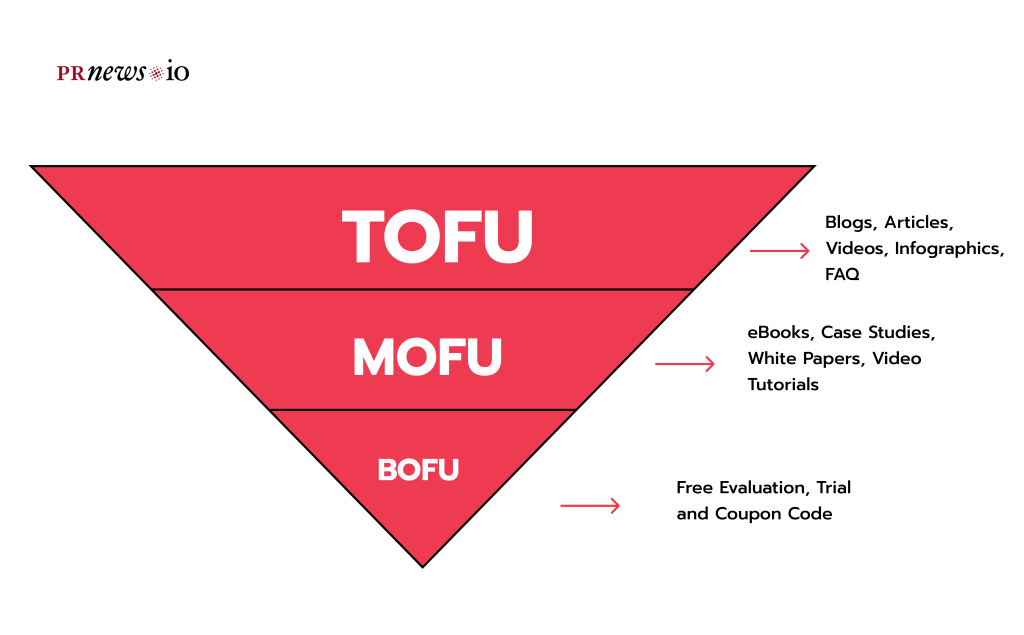
So let’s find out what these different steps are and what you should do at each stage.
What Is the TOFU Stage? Top of the Funnel
TOFU, or “Top of the Funnel,” represents the initial stage in the marketing funnel. It serves as the starting point for potential customers’ journey with your brand. The primary purpose of TOFU is to create brand awareness and attract a broad audience.
The top of the funnel, also known as the awareness stage, is a phase during which visitors have just realized they have a problem, or they may be vaguely aware that something is missing. These users do not yet know about your company, so TOFU (Top of Funnel) content is created to capture their attention where they are most likely to engage.
TOFU content should be purely educational and should not contain anything even remotely related to a sales pitch. Users simply aren’t ready for one at this stage, as many are still trying to fully understand the issue they’re facing. Therefore, avoid mentioning your brand, product, or service. Instead, provide them with useful content to address their questions or pain points.
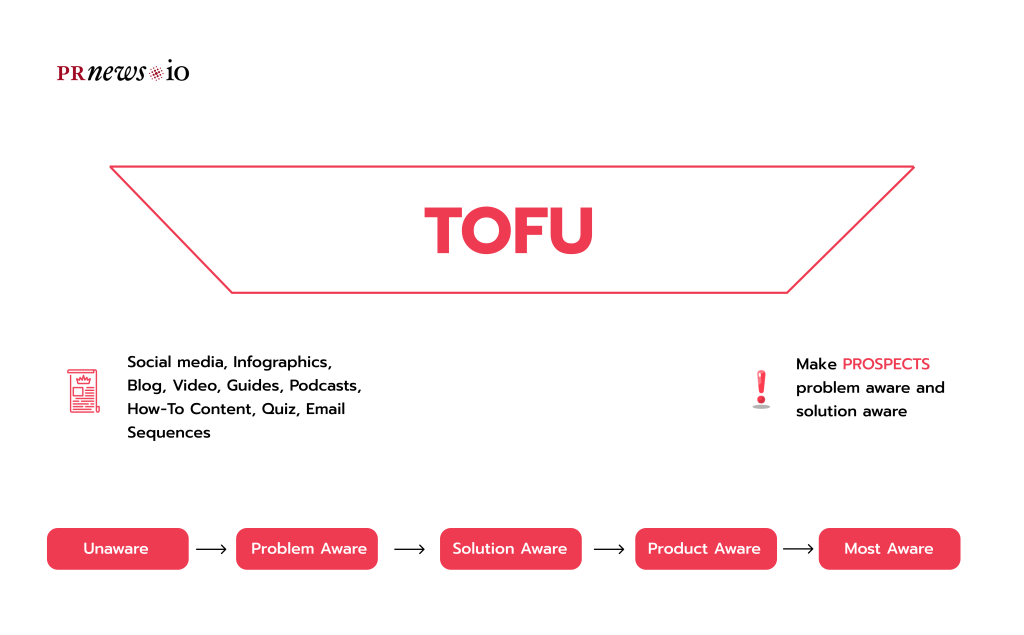
Content Strategies for TOFU
To effectively engage your target audience at the TOFU stage, employ content strategies that align with the goal of creating awareness and interest. Some of the content strategies commonly used for TOFU include:
- Social media: Determine which platforms your clients use and allocate your efforts accordingly.
- Infographic: Create a visual format to help users understand the problem or question they’re trying to solve.
- Blog: Conduct keyword research to create a informative blog post addressing a specific problem or pain point that is easily discoverable by clients.
- Video: Keep videos short at this stage and focus on addressing the problem rather than providing a solution.
- Guides: You can create guides in various formats, not limited to text only. The goal of a guide is to provide the background information your prospective clients need in their journey towards choosing your company as a solution.
- How-To Content: “How-to” posts are more specific than an e-book or general topic guide. They offer step-by-step instructions for your visitors to achieve something with minimal effort.
- Quiz: Learn more about your clients by asking questions about the issues they are dealing with.
- Email Sequences: Email sequences are popular for onboarding new clients as they create a seamless connection between consuming your content and taking action on it.
By offering informative, valuable, and easily digestible content through these strategies, you can initiate the process of converting anonymous visitors into interested prospects, guiding them further down the marketing funnel.
What you need to create TOFU content:
- Understanding of what media your customers use and how: think about the media platforms, types, level of interest or engagement for each, time spent, and how these habits might change with the appearance of new sources.
- Know what gets your users’ attention: think about the topics, such as humor, entertainment, guides, inspiration, and more.
- Your users’ demographic content for targeting: users of different age groups, income, urban or rural areas, lifestyles, and other demographics are likely to be interested in different things.
The main purpose of this content marketing phase is lead generation. Hence, information should be gathered to use in nurturing the leads down the funnel.
What Is the MOFU Stage? Middle of the Funnel
At this second phase of evaluation, users have acknowledged that they have a specific problem to be solved and are actively searching for ways to address it. This signifies that you now have a targeted audience. They are exploring various options and carefully assessing the value of each.
Now, you can introduce your own product or service. In the MOFU stage, you should continue educating your audience, but also emphasize why your solution is the best choice. Since leads are now warm, seize this opportunity to explain how your product or service can assist them. The MOFU stage is also an excellent opportunity to offer gated content to collect contact information from potential buyers.
What you need to create MOFU content:
- A small existing relationship with your clients (social media follower, newsletter sign-up, previous website visitor)
- A source for providing educational content (blog on your website or other platforms, video blog, etc.)
- Call-to-action (CTA) to move to the next phase.
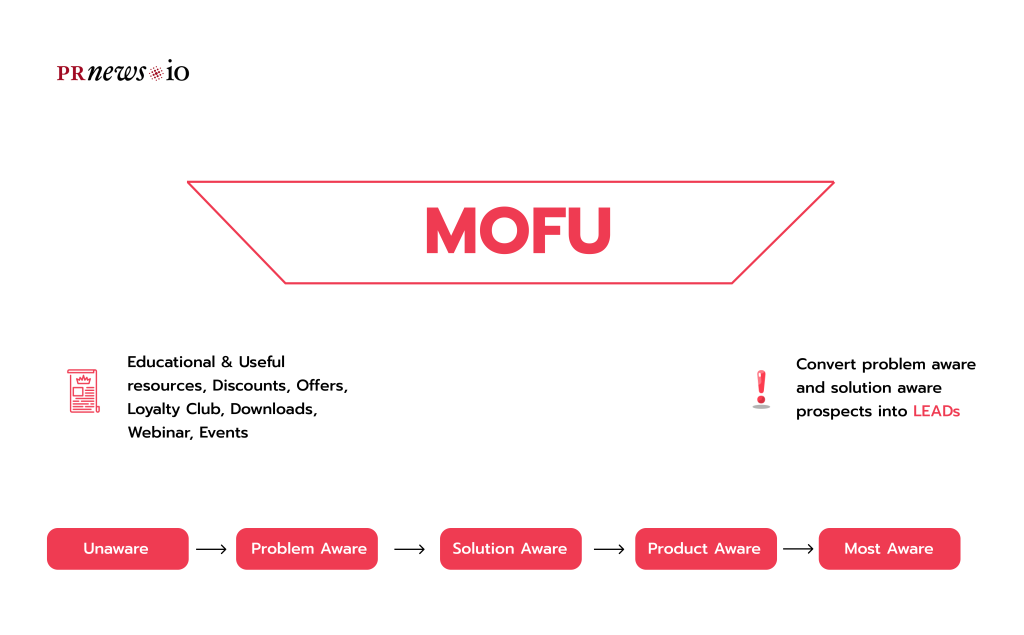
Check out the appropriate types for MOFU content:
- Blog: Pose a question related to your product or service. “Are you struggling to [specific problem]? Discover how our [product or service] can provide a solution.”
- Case study: Assist clients in understanding the benefits of your product or service by showcasing how it has helped other clients. “See how [Client X] achieved [specific benefit] by implementing our [product or service].”
- Whitepaper: Provide detailed information on a topic to convey why your solution is the best choice. “In-depth analysis: Why our [product or service] is the superior choice for solving [specific problem].”
- Webinar: Organize training on a topic and allocate time for participant questions. “Join our live webinar to master [topic related to your product or service] and get your questions answered.”
- Email drip: Create a sequence of nurturing emails that offer content tailored to each client. “Nurture your knowledge with our series of emails, each offering content tailored to solving your unique challenges.”
- Guide/How-to content: Offer step-by-step instructions for problem-solving. “Step-by-step guide: How to [solve a common problem] with our [product or service].”
- Template: Enable buyers to explore how your brand can address their specific problems. “Explore our customizable templates and see how our [product or service] can streamline your [specific process].”
- Comparisons: Provide a comparison of solutions, rather than vendors, at this stage. “Comparing solutions: Why our [product or service] outshines the rest in addressing [specific problem].”
This middle of the content funnel is where most companies do most of their marketing. This is the step where most often companies sell their products and services.
What Is the BOFU Stage? Bottom of the Funnel
BOFU, or the Bottom of the Funnel, is where you have already earned enough trust with your future clients. This represents the lower stage of the funnel and can be visualized as the tapered or narrow end of the funnel.
As a marketer, your role in this phase is to present your company in a compelling way that motivates potential clients to take action, convincing them that your solution is the best way to address their problems. At the bottom of your content funnel, you might offer limited-time promotions for your products or services. This is where you ultimately convert leads into actual clients.
Evaluation and purchase are the primary focuses of this phase. You must ensure that your potential buyers have sufficient information about the product beforehand, so nothing hinders them from completing the transaction when they reach a buying decision.
The primary objective of this final step is to transform leads into customers.
What You Need to Create BOFU Content:
- Understanding of the client’s issues: Put yourself in your client’s shoes and consider what solution will provide the most benefit for them.
- A platform for showcasing potential solutions: Your solution also needs to be accessible for your clients. Think about how your clients might find it and where it will have the most impact.
- Willingness to purchase a product or try a service: Streamlining the process of purchasing a product can help in finalizing the sales funnel.
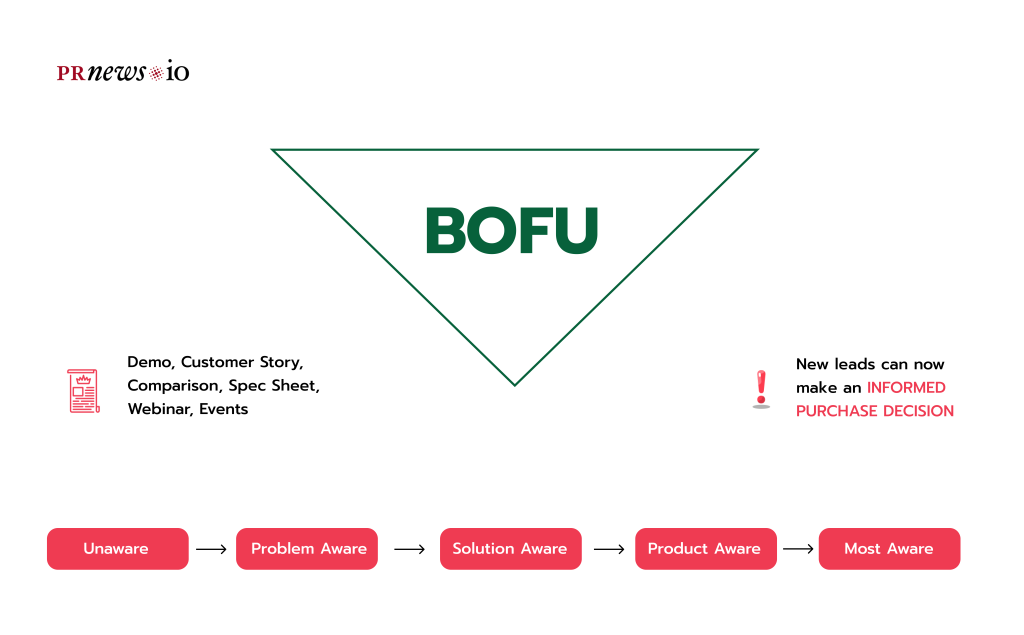
The appropriate types of the BOFU content:
- Product demo: Provide buyers with information on how your product actually works. Whether on-site or in a video, display all important characteristics and relate them back to benefits, and show how you exceed the competition.
- Free trial: Give clients the chance to try your product without making a big commitment.
- Testimonials and case studies: Clients’ stories are also useful in this final step, as they are content that converts and provides a third-party estimation of your service or product.
- Product characteristics: Show what your product can do and the benefits it gives, especially the advantages it has over the competition.
- Product comparisons: Help clients understand where your product or service scores by clearly highlighting the differences between your brand and the competitors.
- Webinars: This content type is perfect for products with high buyer resistance.
- Giveaway: Many clients who have discovered your product but might not is sure to make a purchase can be finally convinced by a giveaway. You might share it via social media, newsletter, or other sources.
- Coupon: Similar to a giveaway, a discount might be the final argument a customer needs to buy your product or service. Present the discount as an invitation for first-time buyers to boost this offer.
- Proof as UGC: User-generated content (UGC) functions as social proof, highlighting the quality of your product by showing that other people are satisfied with it. Publish your existing clients’ reviews, videos, social posts, or other content to make convincing the Bofu content.
| Funnel Stage | Acronym | Description |
|---|---|---|
| Top of the Funnel | TOFU | – Initial stage – Focus on creating brand awareness – Attract a broad audience |
| Middle of the Funnel | MOFU | – Audience is considering solutions – Content emphasizes product benefits – Leads are warm |
| Bottom of the Funnel | BOFU | – Conversion stage – Promote the product or service – Leads are ready to make a decision |
Bonus: Brand Evangelist Sales Funnel Stage
Congratulations! Your TOFU, MOFU, and BOFU content have worked successfully and their power brought you lots of clients. But the content marketing funnel doesn’t finish there. Content after purchase can turn a one-time buyer into a lifelong client and brand evangelist. This content should constantly provide them additional points to stay with you, in addition to a great product or experience.
The appropriate types of content:
- Special feature blogs: Content for blogs at this marketing funnel phase should be different than previous blogs you’ve created. These may focus more on your business or products, such as events you are organizing, good works you are involved in, or contests and giveaways.
- Re-engagement emails: make your email content interesting and useful for your clients. Segment your audience to ensure you’re sending the right content for them.
- Contests or giveaways: Give thanks and support this segment of your clients. Create motivational events as an opportunity to engage them and make some gifts as gratitude to their loyalty.
- Storytelling videos: This type of content should also engage and inspire. You might point out exceptional activities from particular clients, charity activities, employees, partners.
- Community forums: organize a safe and welcoming place for clients to share their experiences and connect with others. Position yourself as a professional and maintain a positive climate there.
The Role of SEO in Funnel Content
It’s not just about creating compelling content; it’s also about ensuring that your content is discoverable by your target audience.
Here’s how SEO influences and enhances your funnel content at each stage:
1. TOFU (Top of the Funnel):
- Keyword Research: SEO starts with understanding what your potential audience is searching for. Conducting keyword research helps you identify the topics and phrases that resonate with your target group.
- Content Optimization: When creating content for TOFU, ensure that it is optimized for relevant keywords. This makes your content more likely to appear in search results when users start exploring their problems or needs.
2. MOFU (Middle of the Funnel):
- Content Depth: At this stage, potential customers are delving deeper into their problems. SEO helps you identify long-tail keywords and questions that you can answer in your content. Creating in-depth content that addresses these specific queries can engage users.
- Internal Linking: Guide users from your TOFU content to MOFU content through internal linking. This not only helps with SEO but also encourages users to explore further.
3. BOFU (Bottom of the Funnel):
- Product or Service Keywords: For BOFU content, use SEO to optimize for keywords directly related to your product or service. Ensure that your content is visible to users actively seeking a solution.
- Conversion Optimization: SEO isn’t just about rankings; it’s also about ensuring your content is designed for conversions. This means clear CTAs, persuasive copy, and easy navigation.
4. Across the Funnel:
- User Experience: SEO also considers user experience. A well-structured website, mobile-friendliness, and fast-loading pages improve SEO, which, in turn, keeps users engaged.
- Local SEO: If your business is location-based, local SEO is essential. It helps you connect with nearby prospects and guide them through the funnel effectively.
- Analytics and Optimization: SEO tools provide data that can help you understand what’s working and what needs improvement at every stage of the funnel.
SEO is not a one-size-fits-all strategy. It’s a dynamic and ongoing process that adapts to the changing needs and behaviors of your target audience. By incorporating SEO best practices at each stage of your funnel, you enhance the visibility of your content, attract the right audience, and ultimately guide them towards conversion.
Bottom Line
With a detailed analysis, the content marketing funnel provides you with information on what you have to do to affect clients at every stage. By analyzing your funnels starting from the top to the bottom, there’s a great opportunity to receive bigger sales, more loyalty, and stronger brand awareness.
Understanding the content marketing funnels deeply will help you build an efficient marketing strategy for attracting new clients at the first stages, persuading them to trust your company more and take a decision in your favor.
What is the purpose of the TOFU stage in the marketing funnel?
The TOFU stage, or “Top of the Funnel,” aims to create brand awareness and attract a broad audience.
Read more: What Is Paid, Owned & Earned Media
Content Marketing Platform
- 100,000+ media publications;
- get backlinks to your product;
- scale work with content distribution.
FAQ: TOFU, MOFU, BOFU Funnel
What is the purpose of the TOFU stage in the marketing funnel?
The TOFU stage, or “Top of the Funnel,” aims to create brand awareness and attract a broad audience.
How can I measure the success of my funnel marketing efforts?
You can measure funnel success through key metrics like click-through rates, conversion rates, and bounce rates, using analytics tools.
What role does SEO play in funnel marketing?
SEO is essential in making your content discoverable and attracting potential customers to your funnel.
How can I keep prospects engaged throughout the funnel stages?
Engaging content, storytelling, and providing solutions that resonate with your audience are effective ways to maintain engagement.
What’s the significance of customer journey mapping in funnel marketing?
Customer journey mapping helps tailor content to the specific needs and preferences of your audience, making the funnel more effective.
What is BOFU?
BOFU stands for “Bottom of the Funnel.” It represents the final stage in the marketing funnel where leads are in the decision-making phase and are ready to make a purchase or take a specific action.
What is TOFU, MOFU, BOFU?
TOFU, MOFU, and BOFU are stages in the marketing funnel. TOFU is “Top of the Funnel,” MOFU is “Middle of the Funnel,” and BOFU is “Bottom of the Funnel.” These stages represent different phases in the customer journey, from initial awareness to conversion.
What is BOFU content?
BOFU content is content specifically created for the Bottom of the Funnel stage. It is designed to provide information, incentives, and calls to action that guide leads towards making a purchase or taking a desired action.
What characteristics differentiate TOFU, MOFU, and BOFU prospects?
TOFU prospects are at the initial stage, just becoming aware of their problems. MOFU prospects are in the middle stage, actively considering solutions. BOFU prospects are at the final stage, ready to make a decision. Differentiating characteristics include their level of awareness, engagement, and readiness to take action in the customer journey.

